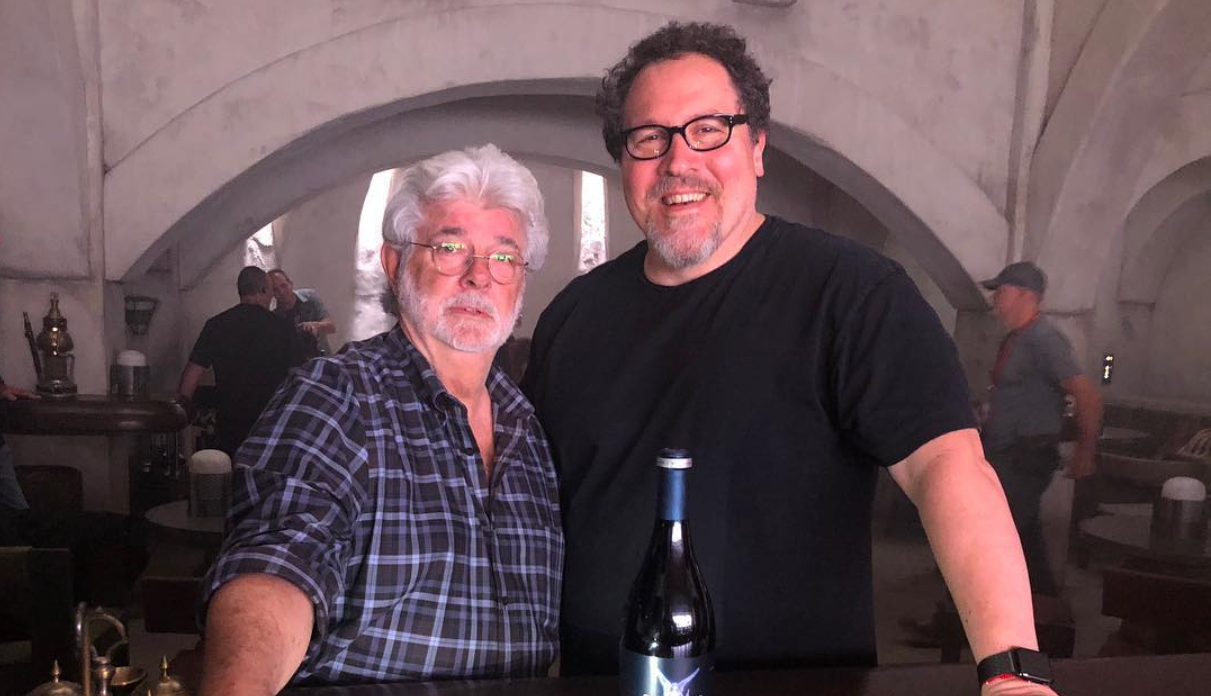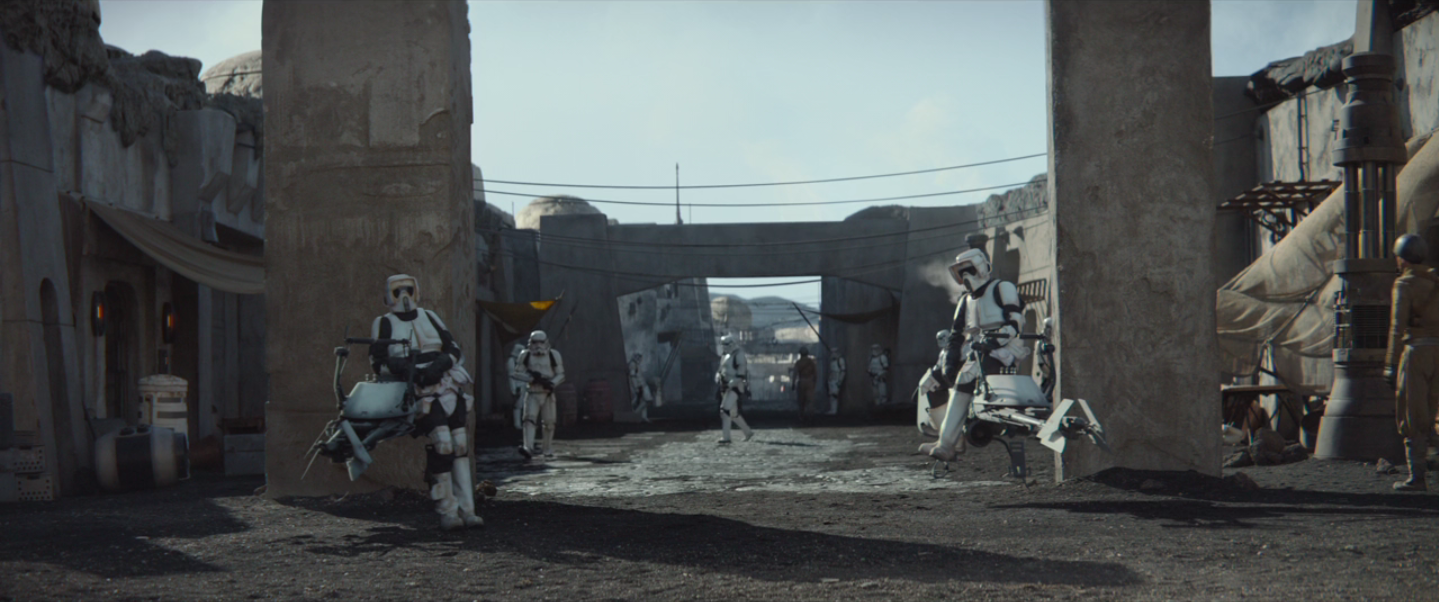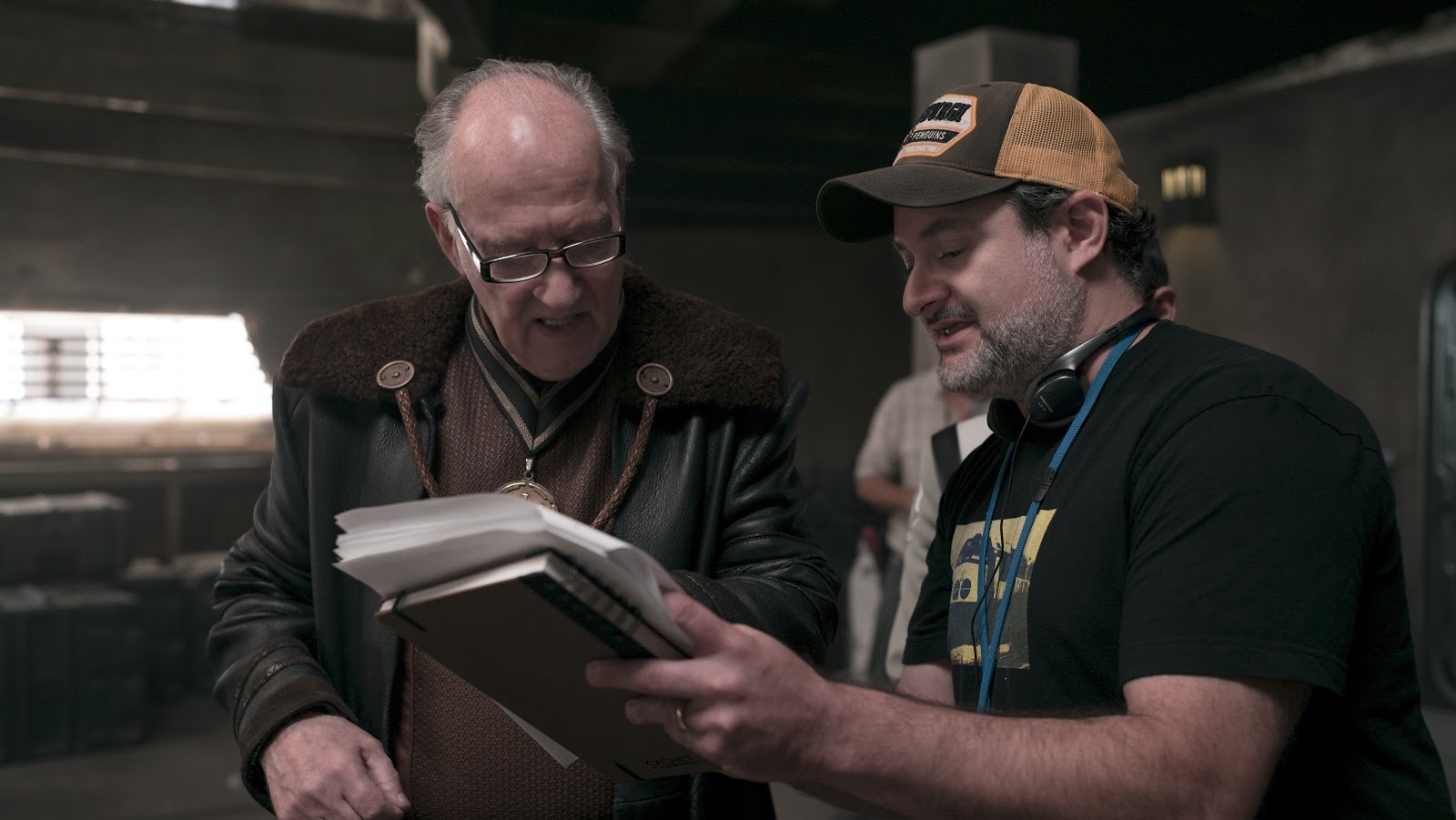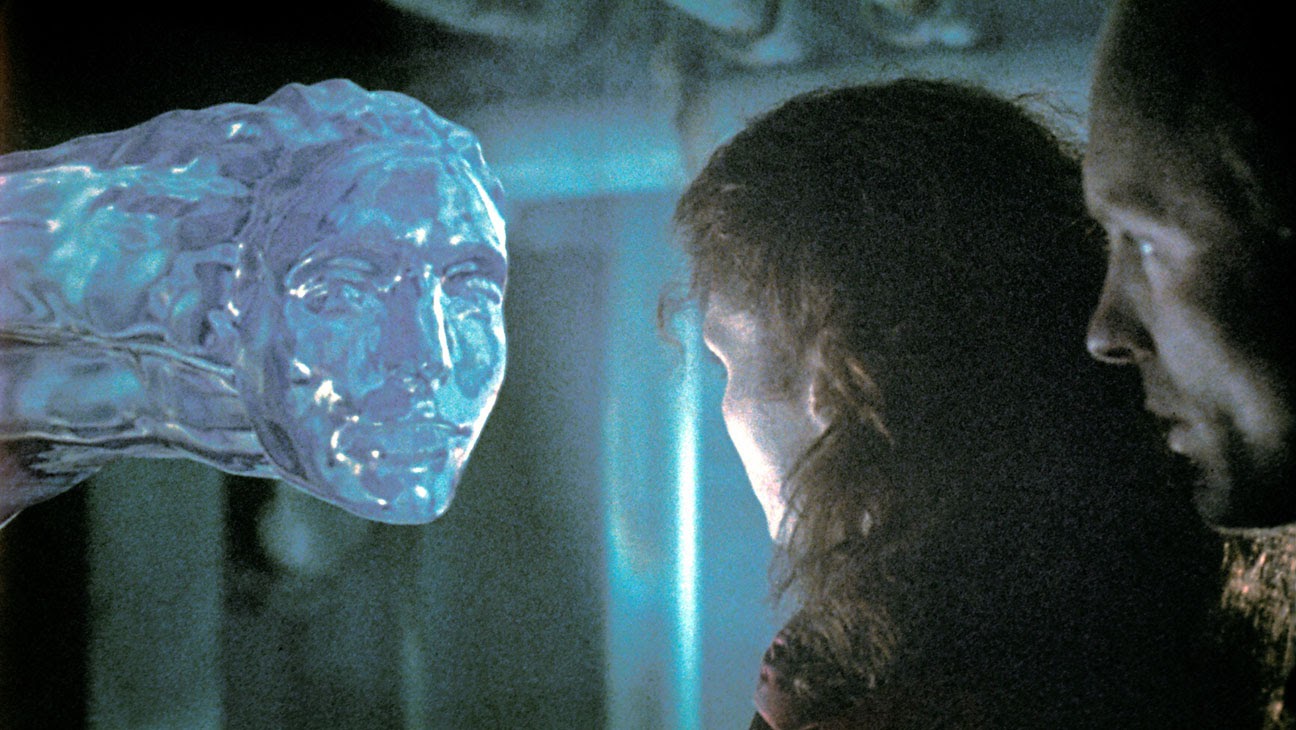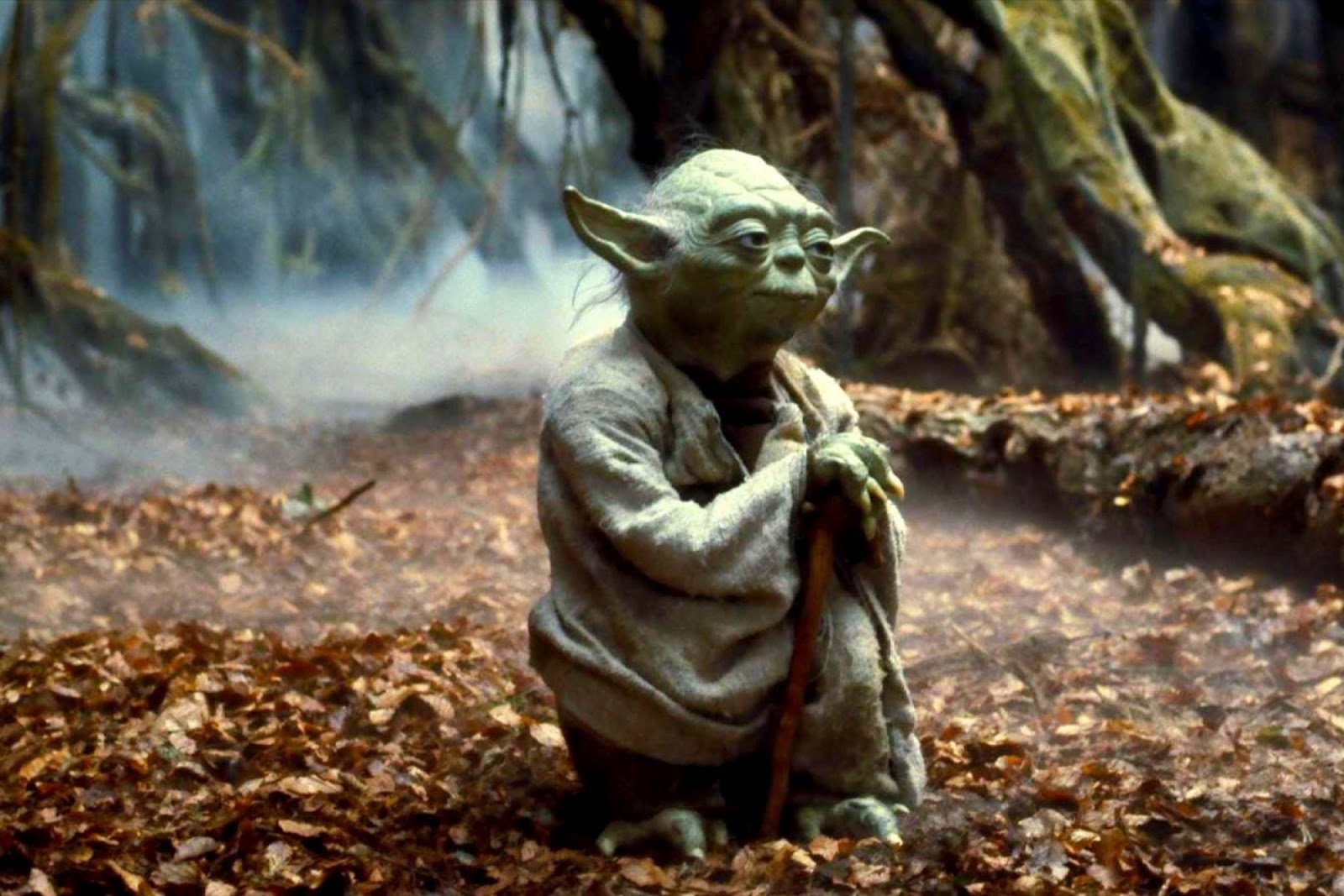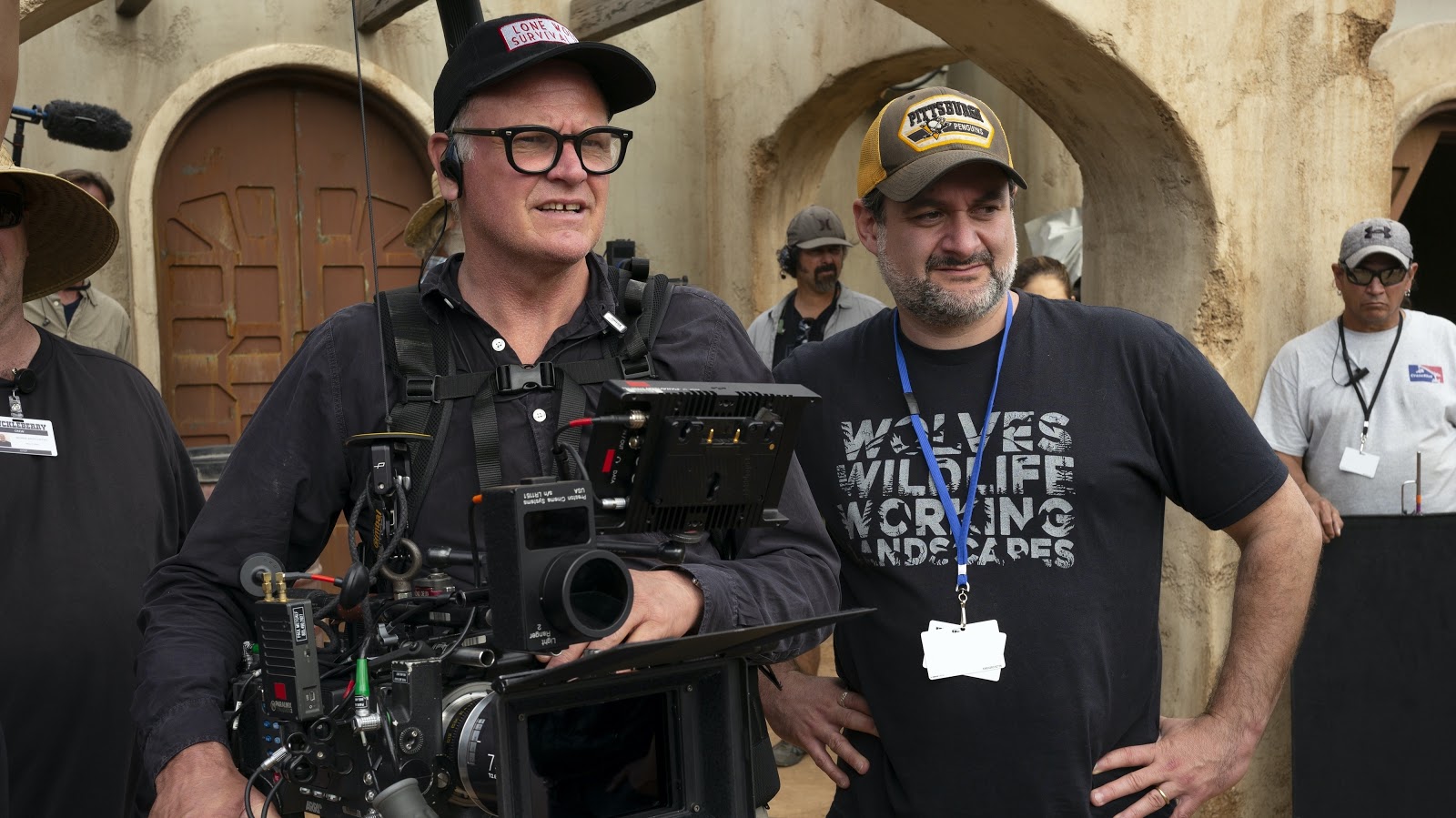We continue Laughing Place’s episode-by-episode breakdown of the eight-part behind-the-scenes documentary Disney Gallery: The Mandalorian with the second installment, entitled “Legacy,” streaming now on Disney+.
This episode was released just four days after the first one, with the premiere having coincided with May the 4th for Star Wars Day. The second chapter focuses on the influence Star Wars had on the filmmakers who crafted The Mandalorian and the concepts and themes George Lucas instilled in the universe when he created it. Below I’ve listed the most interesting tidbits we learned in this enlightening half hour.
- The exterior city street sets for the planet Nevarro were constructed in a Los Angeles train yard.
- Jon Favreau has been a Star Wars fan since the original movie came out when he was 11 years old. He was a teenager working in a Flushing, NY movie theater when Return of the Jedi was released in 1983, but by then he had moved on to be more interested in films like the Mad Max franchise. But he says his tastes “formed around George Lucas’s Star Wars.”
- Visual Effects Supervisor John Knoll was inspired to enter the film industry because of Star Wars. He was already working at Lucasfilm’s in-house VFX department Industrial Light & Magic when George Lucas began ramping up development on the Star Wars prequel trilogy.
- Lucasfilm President Kathleen Kennedy says Lucas always had more Star Wars in the back of his mind while they were working together making the Indiana Jones trilogy in the 1980s.
- Producer / Director Dave Filoni says he always tries to create more Star Wars in the way Lucas would have created it.
- Director Bryce Dallas Howard says George Lucas always intended for the universe and characters of Star Wars to expand outside of the stories with which he had a direct involvement.
- Director Rick Famuyiwa says he always imagined telling his own Star Wars stories while he was growing up playing with action figures from the movies.
- By the time Kennedy took control of Lucasfilm, the company held “over 126 patents” for new technology that had been developed in making its films and visual effects.
- Favreau’s roundtable lists off some of the accomplishments made by Lucasfilm over the years: the first CGI character, the EditDroid non-linear editing system which evolved into Avid, and motion control.
- ILM’s contributions to The Abyss, Terminator 2: Judgment Day, and Jurassic Park all played a big part in furthering the possibilities of visual effects technology.
- Star Wars: Episode I – The Phantom Menace has the most practical miniature effects of any Star Wars film.
- Animation Director Hal Hickel was first inspired by the original King Kong to go into the visual effects field, then Star Wars “sealed the deal.”
- Actor Pedro Pascal fondly remembers going to see Return of the Jedi in the theater when he was 8 years old.
- Actor Carl Weathers says he began appreciating the brilliance of Star Wars after becoming a student of filmmaking. It introduced him to the writings of Joseph Campbell and the concept of “The Hero’s Journey.”
- Director Taika Waititi’s favorite Star Wars moment is this exchange between Luke and Yoda during Luke’s training on Dagobah: “I don’t believe it.” “That is why you fail.”
- Director Deborah Chow explained the challenges in crafting the tone of the montage wherein Kuiil rehabilitates IG-11. They also talk about the evolution of the characters’ arcs and the show’s western themes.
- Favreau says the concept of death is an essential part of storytelling. “If you don’t [kill characters], then it doesn’t matter.” He also talks about the importance of bringing up the next generation on mythology.
- Dave Filoni gives a long speech about Anakin’s arc– how it’s set up in The Phantom Menace and pays off in Return of the Jedi, and how it’s all about him not having a proper father figure. “The family dynamic is so important to George, and so important to Star Wars.”
Next week: “Cast”
Sign up for Disney+ or the Disney Streaming Bundle (Disney+, ESPN+, and ad-supported Hulu) now

